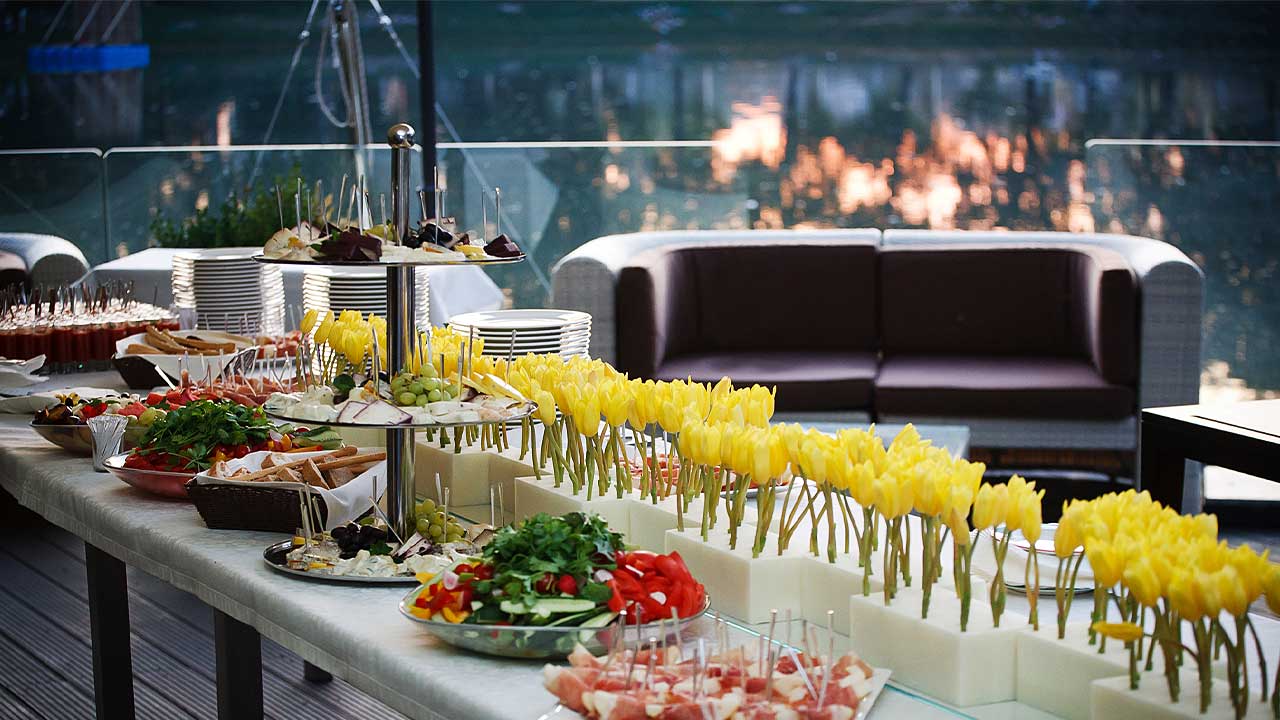Vietnam Discovery – Where Culinary Excellence Converges
The F&B market in Vietnam is becoming increasingly vibrant after two challenging years due to the Covid-19 pandemic. To maintain a strong position in the competitive environment, brands are increasingly in need of specific positioning strategies to build their brand image and develop unique and fresh experiences.
When exploring a new destination, a foreign land, you don’t just visit famous landmarks, but immerse yourself in diverse culinary experiences in that country. It’s no exaggeration to say that food is how we connect with each other, with culture, and with the world around us. Recognizing this change, the tourism and hospitality industry is increasingly focused on providing unique culinary experiences that are closely tied to local culture. Vietnamese cuisine is renowned worldwide for its diversity, richness in fresh ingredients, and bold flavors. The fusion of food and culture creates a vibrant, diverse, and exciting journey to discover the flavors of Vietnam, leaving special impressions and unforgettable memories in the hearts of international friends and local residents.
Rich Flavors from Traditional Spices
The journey of exploring Vietnamese cuisine is like a colorful, captivating, and enticing adventure. The culinary experience stretches from the North to the South, with iconic dishes such as pho, bun cha, nem ran, banh xeo, hu tieu, and com tam. Each region has its own distinctive flavors: the people of the North enjoy a delicate balance of spices, while the Central region is renowned for its sophisticated flavors and harmonious combination of local ingredients and seafood. Meanwhile, the Southern region is known for its sweet flavors and abundant use of aromatic herbs. In addition to savoring delicious food, exploring Vietnamese cuisine is also an opportunity to learn about the culture and way of life of the local people. On this journey, you will meet local residents, participate in cooking experiences, explore local markets, and gain a deeper understanding of the origins and stories behind each dish.
Natural ingredients – promoting health with Vietnamese cuisine
Vietnamese cuisine has established its position in the world thanks to its unique and outstanding characteristics. The distinctiveness of Vietnamese cuisine stems from the fusion of multiple cultures and the creativity in using natural ingredients. Ingredients play a crucial role in Vietnamese cuisine. From distinctive spices like chili, onions, and garlic to various fresh and aromatic herbs, they all contribute to the distinctive and enticing flavors. In particular, the use of natural spices and gentle cooking methods helps preserve the natural flavors and nutritional value of the dishes.
Expanding on this unique flavor profile, it also serves a purpose in wellness menus or health-focused offerings in the travel industry. Vietnamese cuisine offers a range of dishes that are not only delicious but also nourishing and beneficial for one’s well-being. The emphasis on fresh ingredients, herbs, and light cooking methods aligns with the principles of wellness and health care. From flavorful salads with vibrant herbs to nutritious broths packed with herbs and spices, Vietnamese cuisine provides a holistic dining experience that caters to the needs of health-conscious travelers.
When exploring a destination, food becomes an integral part of the overall experience. Incorporating Vietnamese cuisine into wellness or health-focused travel not only introduces travelers to new flavors but also allows them to embrace a mindful and nourishing approach to dining. It’s an opportunity to discover the rich cultural heritage and culinary traditions while promoting a healthy lifestyle.
Fusion cuisine – A source of creative innovation for Vietnamese cuisine
The cooking techniques in Vietnamese cuisine also contribute to its uniqueness. From frying, stir-frying, and grilling to blanching, dipping, or steaming, each cooking method brings out distinctive flavors and textures to the dishes. This creates a rich and diverse experience in Vietnamese culinary exploration.
Fusion cuisine is an artistic creation by talented chefs, who combine different cuisines from different cultures around the world to create unique and surprising dishes. In Vietnam, fusion cuisine has become a prominent trend in recent years, as Vietnamese and foreigners share stories about their culinary, artistic, and religious cultures. A specific example of fusion cuisine in Vietnam is pho rolls. This is a creative street food when Vietnamese pho is transformed into foreign spring rolls. Pho rolls have a soft skin made from fresh pho noodles, inside are stir-fried beef, crispy vegetables, and rich dipping sauce. This dish makes diners feel refreshed and sweet, both familiar and novel. Another example of fusion cuisine in Vietnam is crispy fried fish with passion fruit sauce. This is a high-class dish in a 5-star hotel, where Western crispy fried fish is combined with Vietnamese passion fruit sauce. Crispy fried fish has a crispy crust made from snow fish, coated with flour, and fried golden. Passion fruit sauce has a bright yellow color from fresh passion fruit, sugar, lemon juice, and butter. Crispy fried fish is topped with passion fruit sauce and sprinkled with herbs. This dish makes diners feel rich and sour-sweet, both luxurious and cozy.
Vietnamese cuisine – an experience not to be missed
Vietnamese cuisine has established its position in the world thanks to its unique and remarkable characteristics. The distinctiveness of Vietnamese cuisine stems from the combination of various cultural influences and the creative use of natural ingredients. Ingredients play a vital role in Vietnamese cuisine. From the signature spices like chili, onion, and garlic to the abundance of fresh and aromatic herbs, they all contribute to the distinct and enticing flavors. Moreover, the use of natural spices and gentle cooking techniques helps preserve the natural flavors and nutritional value of the dishes.
Vietnamese cuisine is a treasure trove of flavors, colors, and aromas that can captivate any palate. From simple yet satisfying street food to sophisticated and elegant dishes in fine dining restaurants, Vietnamese cuisine offers a variety of options for different tastes and occasions. F&B in the service industry can take advantage of this culinary advantage to create memorable experiences for customers by:
01
Offering authentic and diverse Vietnamese dishes that showcase the regional specialties and cultural influences of Vietnam. Customers can enjoy the freshness and richness of Vietnamese ingredients, spices, and herbs that make each dish unique and delicious.
02
Providing interactive and immersive culinary experiences that allow customers to learn more about Vietnamese cuisine and culture. Customers can participate in cooking classes, food tours, market visits, and other activities that enhance their understanding and appreciation of Vietnamese food.
03
Creating a cozy and friendly atmosphere that reflects the hospitality and warmth of Vietnamese people. Customers can feel welcomed and comfortable as they enjoy their meals with attentive service and pleasant music.
By leveraging Vietnamese cuisine, F&B in the service industry can create memorable experiences for customers that not only satisfy their hunger but also enrich their minds and hearts. Vietnamese cuisine is more than just food, it is a way of life that can inspire and connect people from different backgrounds and cultures.
Understanding the importance of customer experience in sectors such as restaurants, hotels, and particularly in the high-end segment, Ziva realizes that to become a truly remarkable brand, it is necessary to deliver special and memorable experiences. We accompany businesses, hotels, and premium services to help them build a professional brand image and affirm the value that their brand brings. With support from experts, Ziva provides comprehensive and in-depth consulting solutions for these sectors, aiming to deliver a quality and trustworthy brand image.







